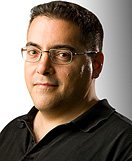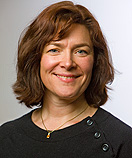News
Genomic work takes UB couple to Mexico
Ancient polar bears, avocados and meat-eating bladderwort plants are the focus of a spring break trip to Mexico for husband-and-wife researchers Charlotte Lindqvist and Victor Albert.
Lindqvist and Albert, who both joined the Department of Biological Sciences faculty in 2008, are in Guanajuato State this week to visit the country’s National Laboratory of Genomics for Biodiversity.
Lindqvist, an assistant professor who is a member of a team sequencing the genome of an ancient polar bear, will deliver a lecture on her work and meet with ancient DNA specialist Rafael Montiel to discuss potential research collaborations.
She also will use the national laboratory’s facilities to extract DNA from an ancient polar bear fossil. Sequencing that animal’s genome will unveil information on the evolutionary origins of a species whose plight is now associated with the devastation wrought by climate change.
Albert, UB Empire Innovation Professor of biological sciences, will be meeting with a colleague, Luis Herrera-Estrella, to discuss projects to sequence the avocado and carnivorous bladderwort genomes.
The bladderwort-sequencing project, which Herrera-Estrella leads, is nearing completion. Albert, a bladderwort expert, is serving as an intellectual consultant of sorts, helping the Mexican group interpret data by relating genetic information to the plant’s physical characteristics and evolutionary history.
The avocado research, a collaboration between Herrera-Estrella, Albert and other partners, is still under way. Later this year, Albert’s research team at UB will be using a technique called “Fluorescence In Situ Hybridization” (FISH) to check their partners' work on the avocado.
FISH is a visual-mapping method that involves examining large pieces of sequenced DNA under a microscope to make sure those pieces fit correctly on chromosomes. While scientists do not know the exact sequence of the avocado genome, they do already know how large chunks of DNA map to one another.



Reader Comments